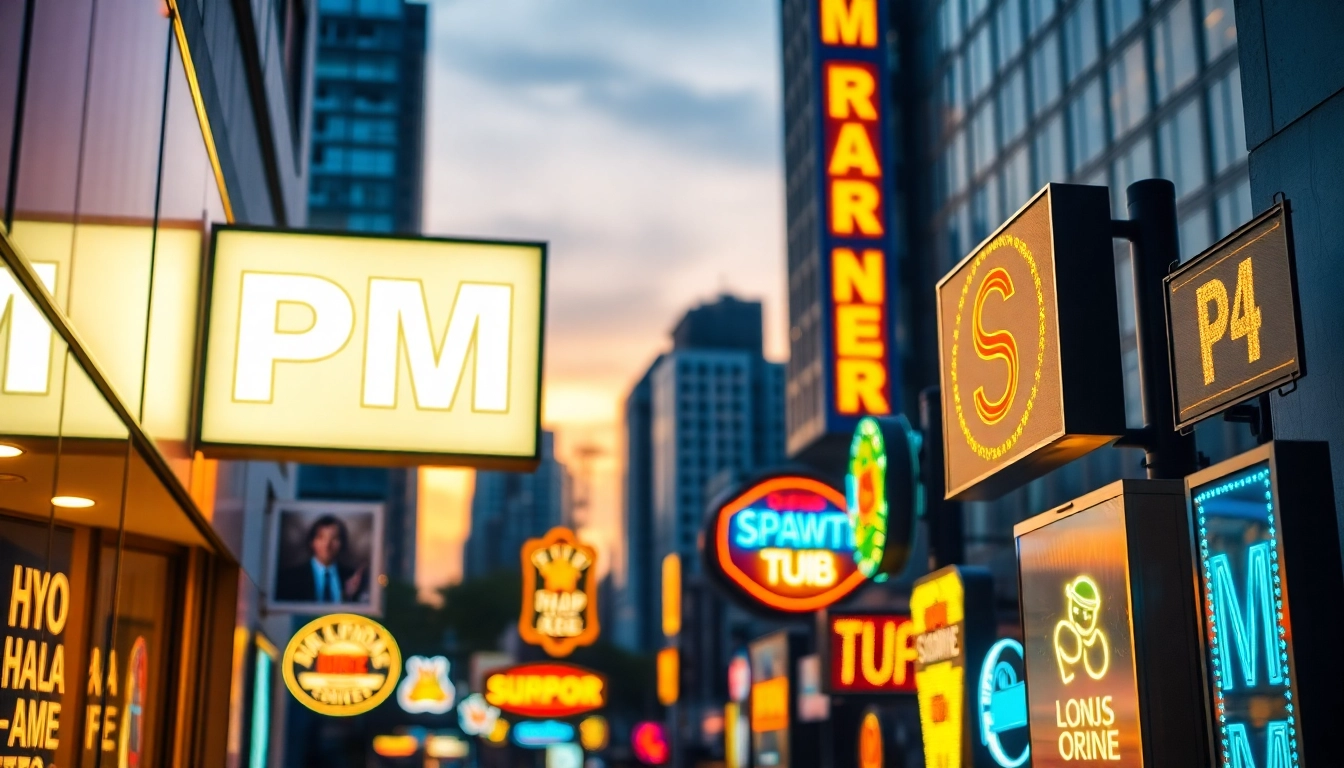Understanding PM Signs: Types and Benefits
Defining PM Signs and Their Role
PM signs, also known as “point of purchase signs”, play a vital role in the business landscape by guiding consumer behavior and enhancing brand visibility. These signs serve as a bridge between businesses and their customers, conveying crucial information about products, services, and promotions. They are essential tools for effective branding, strategically placed to attract attention and influence decisions at pivotal moments. For more insights on implementing effective pm signs, it’s important to consider their placement, design, and purpose.
Various Types of PM Signs in the Market
PM signs range in style, size, and functionality, each serving a specific purpose. The most common types include:
- Directional Signage: This type helps guide customers through a space, providing clear paths and indicating locations of interest, like restrooms or exits.
- Informational Signs: These signs provide details about products, services, or events, helping customers make informed decisions.
- Promotional Signs: Typically temporary, these signs advertise sales or special events, using bold designs to capture attention quickly.
- Brand Signs: These are often larger and permanent, focusing on the brand’s identity, including logos and slogans.
- Digital Signage: Utilizing screens for animated presentations, these signs are dynamic and can be updated frequently to communicate real-time messages.
Advantages of Using PM Signs for Branding
Integrating PM signs into your marketing strategy offers numerous advantages:
- Enhanced Visibility: Effective signage increases your brand’s visibility and can draw in foot traffic from passersby.
- Cost-Effective Marketing: Compared to traditional advertising methods like print or television, signs require a one-time investment and provide ongoing visibility.
- Building Trust and Credibility: Well-designed signs contribute to a professional appearance, enhancing customer trust in your brand.
- Improved Customer Experience: Signs reduce confusion and help customers navigate your business more comfortably, ultimately increasing satisfaction.
Essential Considerations for Designing PM Signs
Understanding Your Audience for Effective Signage
Knowing who your audience is and what they respond to is crucial when designing PM signs. Conducting market research can uncover demographics, preferences, and behaviors that influence your signage strategy. For example, signage aimed at younger consumers may adopt brighter colors and dynamic designs, while a more mature audience may respond better to classic styles. Understanding these nuances can help create signs that resonate with your target audience.
Key Design Elements of Successful PM Signs
The design of PM signs is critical to their effectiveness. Consider the following elements:
- Font Choice: Choosing legible fonts that enhance readability at various distances is crucial. Sans-serif fonts are often more readable from afar.
- Imagery: Visuals should be used to complement the text, providing clarity and engagement. Use high-quality images that reflect your brand.
- Layout: A clean, organized layout helps deliver messages succinctly. Aim for a good balance of text and imagery to avoid overwhelming viewers.
- Size and Placement: The size of your sign should match its purpose and placement. Ensure that signs are installed at eye level and in locations where they can be easily spotted.
Color Psychology in PM Signs: What Works Best?
Colors evoke emotions and can influence consumer behavior significantly. Understanding color psychology can help create more effective PM signs. For instance:
- Red: Associated with urgency and excitement, it’s effective for clearance sales.
- Blue: Evokes trust and dependability, often used by banks and insurance companies.
- Green: Represents health and tranquility; ideal for organic or eco-friendly brands.
- Yellow: Grabs attention and is associated with cheerfulness but must be used carefully to avoid overwhelming designs.
Regulatory Compliance in PM Signage
Understanding Local Signage Regulations
Before designing and installing PM signs, it’s essential to research local signage regulations. These regulations vary widely depending on your city or state and often dictate size, type, lighting, and placement of signs. Noncompliance can lead to fines or necessary removals of signage. Always consult local codes or speak to a professional to verify compliance.
Following Code Specifications for PM Signs
Many areas have specific design guidelines outlining what is acceptable for commercial signage. These codes might include:
- Restrictions on illuminated signs, including brightness and hours of operation.
- Limitations on the use of certain materials or colors.
- Requirements for permits prior to installation for larger or more complex signage.
Permitting Processes for Installation
Before installing PM signs, ensure that you obtain the necessary permits. The permitting process often involves submitting plans for approval, which may take weeks or even months. It’s advisable to liaise with local authorities early in the project to ensure smooth compliance.
Case Studies: Successful PM Signs in Action
Analyzing Effective PM sign Implementation
Successful PM signs don’t just happen by chance; they are the result of thoughtful planning and execution. For example, consider XYZ Coffee Shop, which implemented an eye-catching, brightly colored chalkboard sign outside their store. The sign offered daily specials written in creative typography, resulting in a 30% increase in foot traffic on weekends. Analyzing such case studies can provide insight into effective practices.
Impact of PM Signs on Brand Awareness
Brand awareness is directly influenced by the quality and placement of PM signs. For instance, a local boutique named Fashion Forward integrated whimsical and vibrant storefront signs that strongly conveyed the brand’s personality. This not only attracted new customers but also increased social media mentions, leading to a 50% increase in brand recognition in the local community over six months.
Customer Testimonials: The Difference PM Signs Make
Feedback from customers can highlight the importance of PM signs. A survey conducted by a regional restaurant chain discovered that 90% of first-time customers were drawn to the location purely because of the creative signage. Such testimonials serve as powerful reminders of the role signage plays in a customer’s decision-making process.
Future Trends in PM Signage Solutions
Exploring Technological Innovations in PM Signs
The future of PM signs is increasingly digital. Innovations like augmented reality (AR) and interactive digital displays are gaining traction. For instance, brands can implement signs that customers can scan with their mobile devices for more information or special offers. These technologies enhance customer engagement and provide metrics on customer interactions.
Sustainability and Eco-Friendly PM Signs
As environmental awareness grows, so does the demand for sustainable signage solutions. Brands are increasingly opting for eco-friendly materials and manufacturing processes. Biodegradable materials for signs and energy-efficient LED lighting are becoming popular choices, not only appealing to eco-conscious consumers but also reducing operational costs.
Engaging Customers with Interactive PM Signs
Interactive PM signs are becoming popular as they engage consumers in a two-way communication. Strategies like touchscreen kiosks or QR codes leading to promotional offers can significantly enhance customer interaction. These interactive elements encourage longer customer dwell times and greater brand engagement, leading to increased sales and loyalty.



